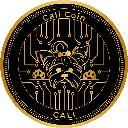 |
|
 |
|
 |
|
 |
|
 |
|
 |
|
 |
|
 |
|
 |
|
 |
|
 |
|
 |
|
 |
|
 |
|
 |
|
Cryptocurrency News Articles
XRP Ledger (XRPL) vs Bitcoin (BTC): Supply Integrity and Usability as a Currency
Feb 05, 2025 at 03:50 pm
The XRP Ledger (XRPL) has been in the spotlight lately after claims that Ripple could boost XRP's total supply beyond its 100 billion token cap.

The XRP Ledger (XRPL) has been making headlines recently following claims that Ripple could increase XRP’s total supply beyond its 100 billion token cap. Critics, particularly Bitcoin maximalists, suggest that Ripple might simply mint additional XRP, impacting its scarcity. However, validators within the XRPL community have provided evidence to refute these claims.
This discussion ties into a broader theme within the crypto sphere: the significance of blockchain transparency and supply integrity. In contrast to Bitcoin, which encountered a bug that generated excess tokens, the XRPL has safeguards in place to prevent such occurrences. This debate also raises questions regarding Bitcoin's usability as a currency, with taxation policies posing a challenge to widespread adoption.
.@Jay_SpendDBits has solved this problem @jack. Please check out the @Spend_The_Bits Payments App, where you can utilize and spend your bitcoin the way Satoshi envisioned. https://t.co/SWGxYXY3xR
XRPL Supply: Unalterable From Inception
The XRPL was launched in 2012 with a fixed supply of 100 billion XRP, and from the get-go, the network ensured that no additional XRP could be minted. The entire supply was initially placed in a genesis account with cryptographic keys that are publicly available.
Due to this transparency, anyone can verify that the supply remains unchanged. The ledger's architecture includes an "invariant checker," a built-in security measure that prevents unauthorized token creation. Every transaction undergoes this check, and any attempt to mint additional XRP is instantly blocked by the system.
Related: BlackRock ETFs, BTC, and XRP—Is a Sovereign Wealth Fund the Next Big Catalyst?
How XRP Differs From Bitcoin in This Aspect
This mechanism sets XRP apart from Bitcoin, which encountered a critical flaw in 2010 when an accidental bug resulted in the creation of 184 billion BTC. Although the Bitcoin network swiftly rectified the issue, it highlighted the importance of robust security measures in blockchain design. The XRPL has never faced such a vulnerability, attesting to the integrity of its supply setup.
One of XRP's defining characteristics is its deflationary nature. In contrast to Bitcoin, which utilizes mining rewards that gradually increase the circulating supply over time, XRP transactions gradually reduce the supply.
XRP's Inherent Burn Mechanism Explained
Each transaction incurs a small amount of XRP that is burned as a fee, leading to a gradual yet continuous decrease in the total XRP available. This mechanism ultimately strengthens XRP's long-term scarcity rather than diminishing it.
And despite claims by critics, Ripple does not possess the authority to mint new XRP. While some argue that Ripple could alter the XRPL's code and modify supply mechanisms, such a change would not gain acceptance from the rest of the network. Similar to Bitcoin, forking the XRPL does not guarantee adoption, as validators and developers maintain the decentralized integrity of the ledger.
Related: Top 5 Trending Crypto on CMC: BTC, XRP, ETH, ETHW, CAKE
Bitcoin's Roadblock: Taxation Policies
Apart from the supply narrative, another key obstacle to Bitcoin's utility as a currency is taxation. Current regulations require users to track buy and sell values for every transaction, incurring capital gains tax obligations. This ultimately deters everyday use, making Bitcoin more suitable as an investment rather than a medium of exchange.
Thus, if governments were to remove these regulatory hurdles, Bitcoin and other cryptocurrencies could experience broader adoption as usable currencies. Additionally, technological advancements in blockchain-based payment systems would likely accelerate, enhancing usability and efficiency.
This article is provided for informational and educational purposes only. It does not constitute financial advice or advice of any kind. Coin Edition will not be liable for any losses incurred as a result of the utilization of content, products, or services mentioned. Readers are advised to conduct thorough research before undertaking any actions related to the company.
Disclaimer:info@kdj.com
The information provided is not trading advice. kdj.com does not assume any responsibility for any investments made based on the information provided in this article. Cryptocurrencies are highly volatile and it is highly recommended that you invest with caution after thorough research!
If you believe that the content used on this website infringes your copyright, please contact us immediately (info@kdj.com) and we will delete it promptly.
-

- Ethereum (ETH) Reaches New Heights, Eric Trump Expresses Optimism
- Feb 05, 2025 at 07:51 pm
- The crypto market has experienced exceptional activity, propelling Ethereum to a level never before reached. In just one day, its spot transaction volume surpassed $38 billion, an all-time high confirmed by David Lawant, head of research at FalconX, in a post on social media X (formerly Twitter) on February 4, 2025.
-

-

-

-

-

-

-

- Ethereum Whales Are Eyeing Presale Coins Like Rollblock (RBLK) as ETH Remains Stable
- Feb 05, 2025 at 07:41 pm
- Ethereum whales are on the hunt for new investment opportunities, but there's nothing surprising about that. While ETH remains stable, its status as an already-established coin means there's little room for massive price surges.
-

- Solaxy ($SOLX) Surpasses $17.6M in Presale Funding, Reflecting Strong Investor Confidence in Its Layer-2 Scaling Solution
- Feb 05, 2025 at 07:31 pm
- While Solana remains a preferred blockchain for high-speed trading, its network is showing signs of strain. Congestion and delayed transactions have frustrated users.






























































